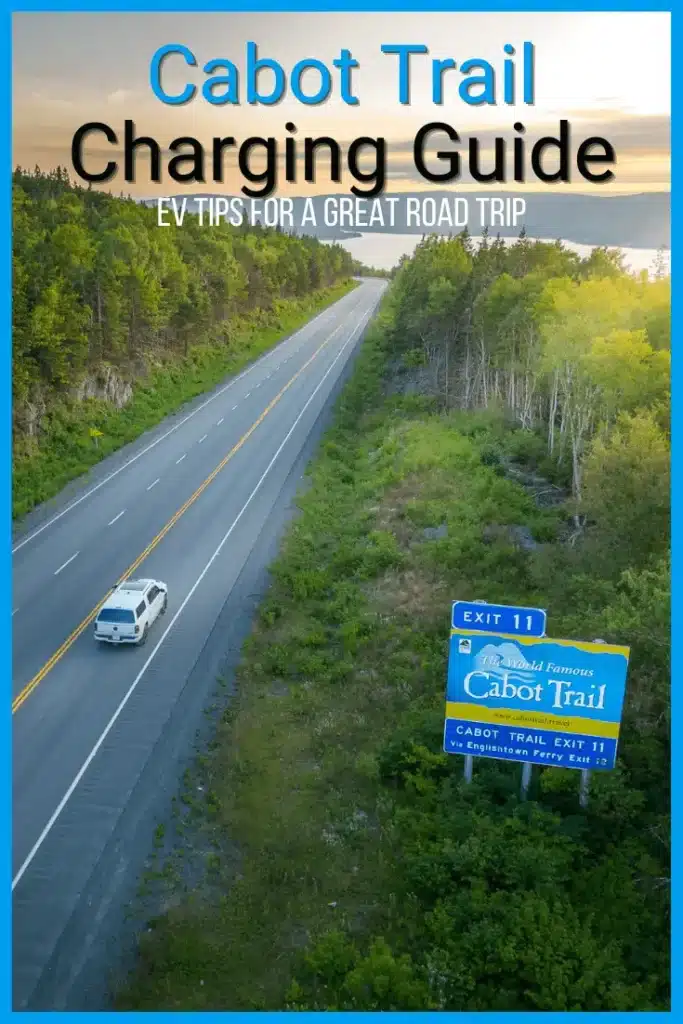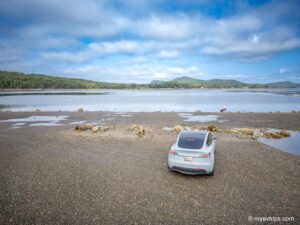Are you gearing up for an incredible road trip along the Cabot Trail? If you plan to explore this breathtaking route in an electric vehicle (EV), you’re in for an unforgettable journey. In this guide, we’re here to make your EV adventure smoother by sharing some simple yet crucial tips around Cabot Trail charging.
Get ready to maximize your Cabot Trail experience and ensure your electric vehicle is prepped for the road ahead with these helpful charging strategies.
1) Have a Plan
First up on this list of tips for tackling the Cabot Trail in an EV is simply to have a plan. This may seem obvious; however, there are several nightmare stories online from EV owners struggling with the Cabot trail charging infrastructure. The bulk of these issues can be avoided with a plan.
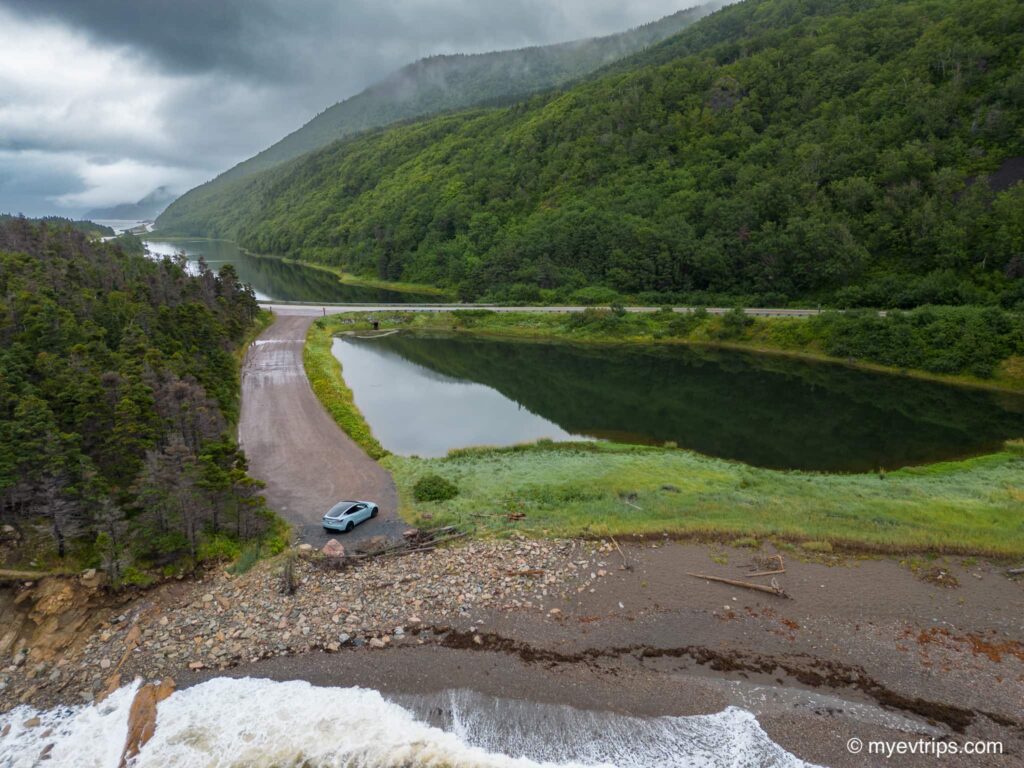
This means knowing your charging options on the way to Cape Breton Island, having the correct adapters, and planning activities and accommodations around charging. This goes double for Tesla owners as there are no fast Cabot Trail Tesla chargers. Having a CCS adapter is key to being able to tap into the limited infrastructure on Cape Breton Island.
Cabot Trail Charging
It may surprise some, but Cape Breton and Cabot Trail charging options are plentiful. There is excellent coverage with L2 chargers around the Cabot Trail and beyond. That said, as of my trip around the Cabot Trail in an EV and posting this, limited L3 is charging, and there are no fast Cabot Trail Tesla chargers. There are only fast chargers in Baddeck and Sydney. This means having a plan in place is much more important, especially if you plan on taking the ferry to Newfoundland.
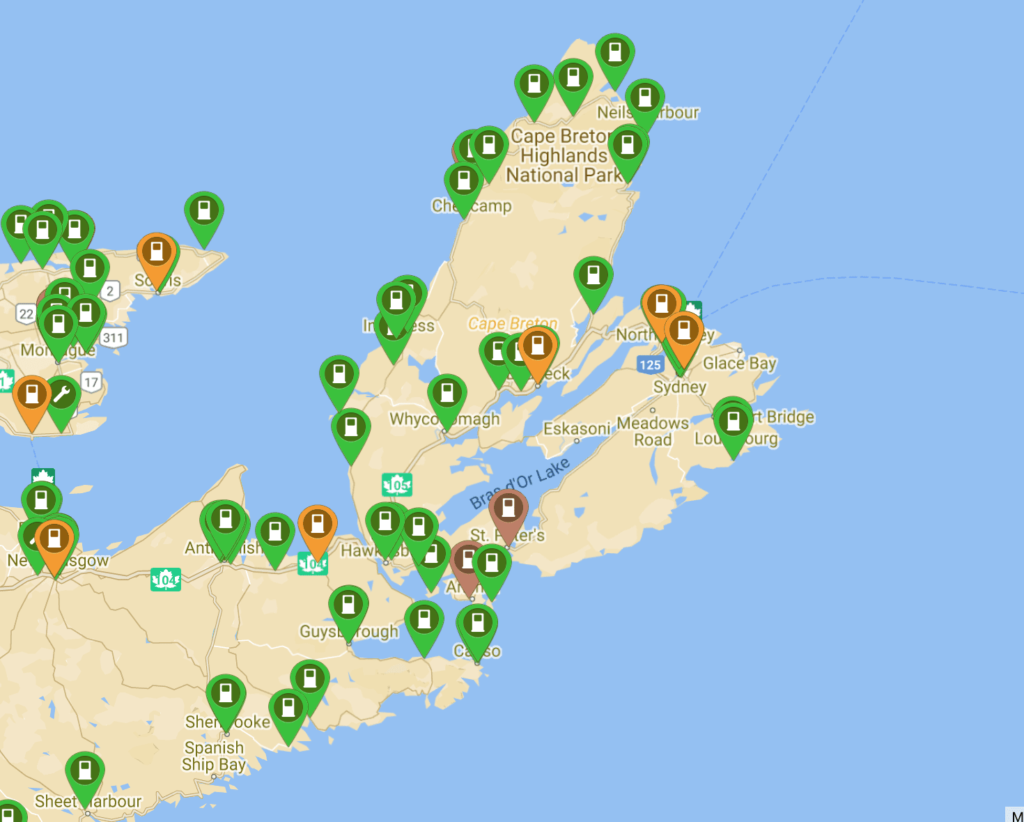
If you haven’t already, I suggest reading my full Cape Breton EV Road trip guide, which breaks down charging stops, options, and what to see and do along the way.
2) Pick Activities with Chargers
There are plenty of L2 charging options around the Cabot trail. Many of these are next to parks, beaches, hiking trails, and historical sites. Best of all, most of them are free. Make use of them.
If you are driving the Cabot Trail, you will stop and see the sights. You might as well charge while you do it!
Big Spruce Brewing has a great patio and tasting room and offers free EV charging for its guests. The same goes for the Macintosh Falls and Beulach Ban Falls trailheads, Ingonish Beach, and the fascinating Alexander Graham Bell National Historic Site and Museum in Baddeck.



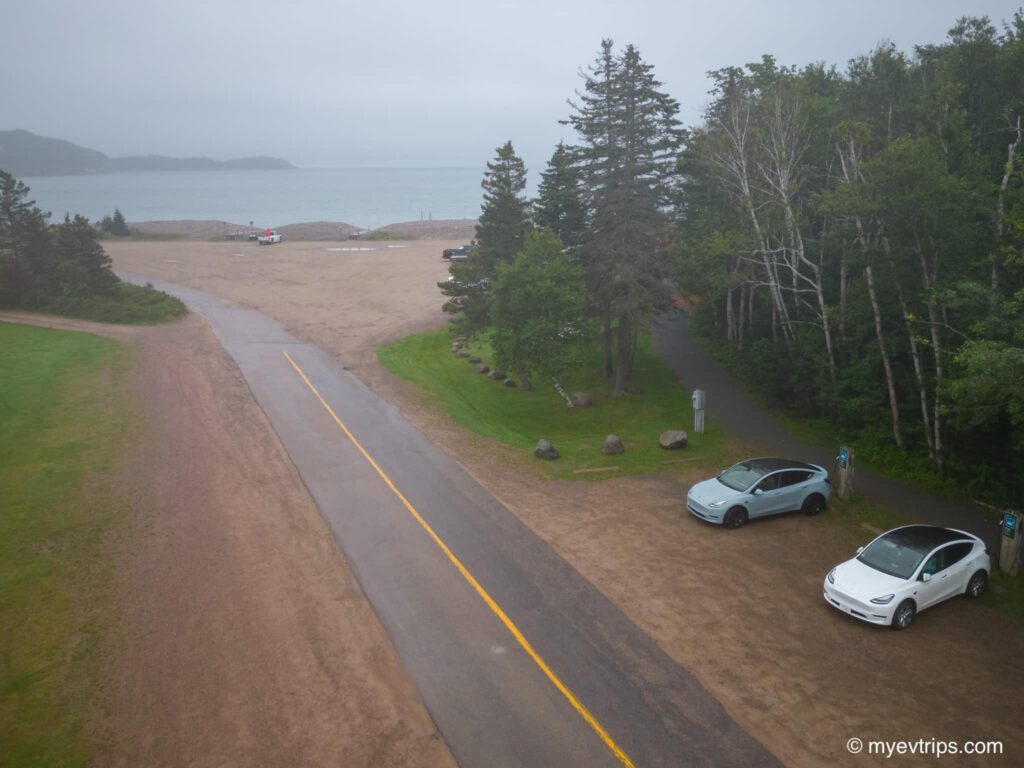
If you are a golfer, why not get 18 holes in while your car charges?

The amazing Cabot Links golf course has L2 charging free for guests to use, and the Cape Breton Highland Links is a short walk away from the chargers at Ingonish Beach.




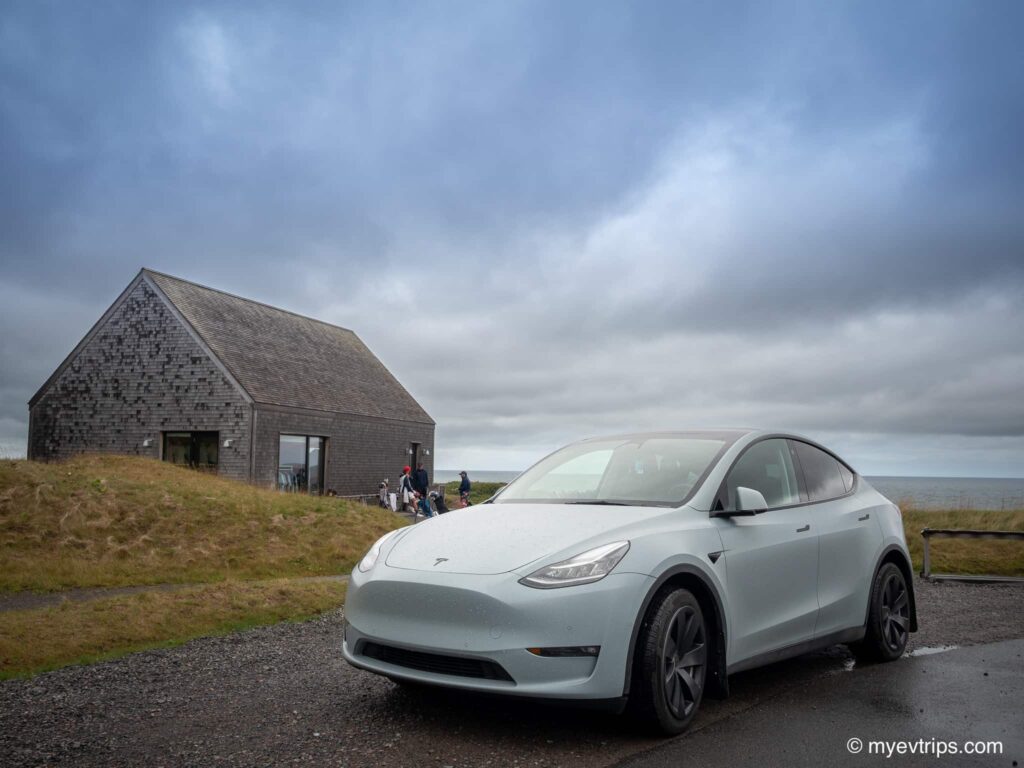
3) Pick Accommodations With Chargers
Like letting your car charge while you see the sights, you can also (or alternatively) charge while you sleep.

Although there are only a couple of accommodations with Cabot Trail charging at the time of posting this, you still have options.
Sally’s Brook Wilderness Cabins, The Markland Coastal Beach Cottages, McIntyre’s Cottages & Cameron House, and Lauries Inn all offer guests free J-1772 charging with their stay.
Alternatively, with the correct adapter, you can take advantage of one of Parks, Canada’s 30 amp campsite stalls and charge overnight while you take in a little nature. Ingonish Beach and Cheticamp campgrounds both have sites with 30-Amp service.
For my Cabot Trail charging, I used the free charging at the Cape Breton Highlands Office and stayed at the nearby Skyline Cabins. It’s only a 10-minute walk away, which is super convenient.

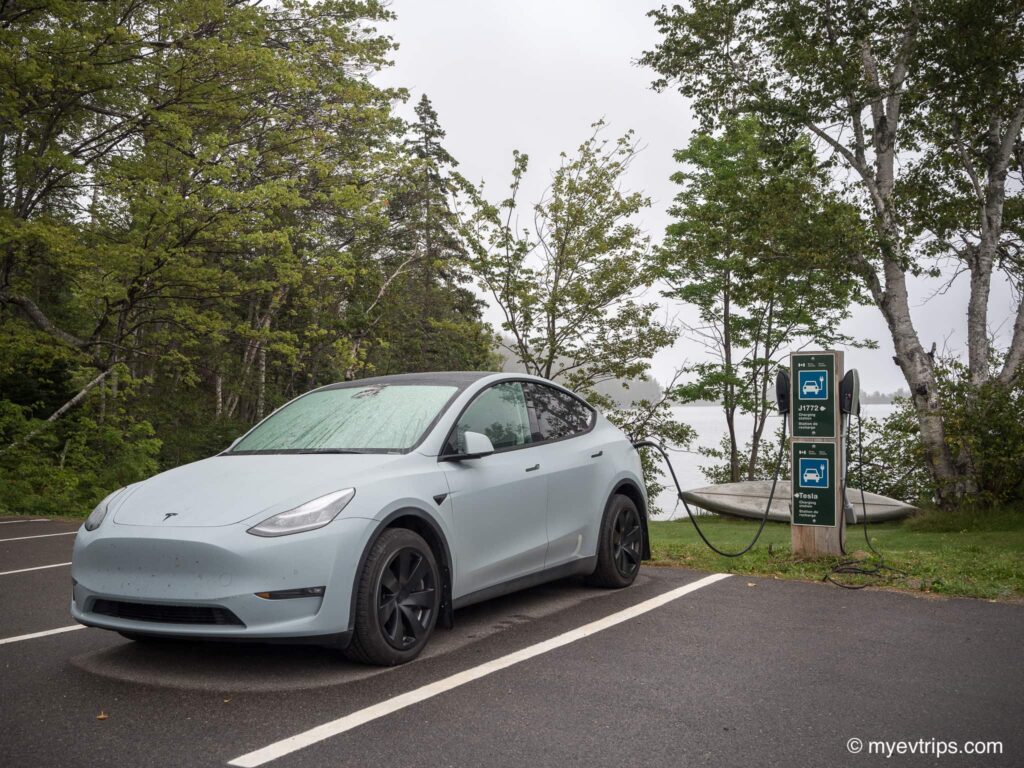
I also stayed at Laurie’s Inn in Cheticamp and took advantage of their free charging. I was also going to camp, but the weather was not cooperating while I was driving the Cabot Trail in an EV.
4) Don’t Overstay Your Welcome
Now, even though there are ample level two Cabot Trail charging options, it’s important that you exercise proper EV charging etiquette.
This means that you only park in an EV charging stall when you are charging and move your car when finished.
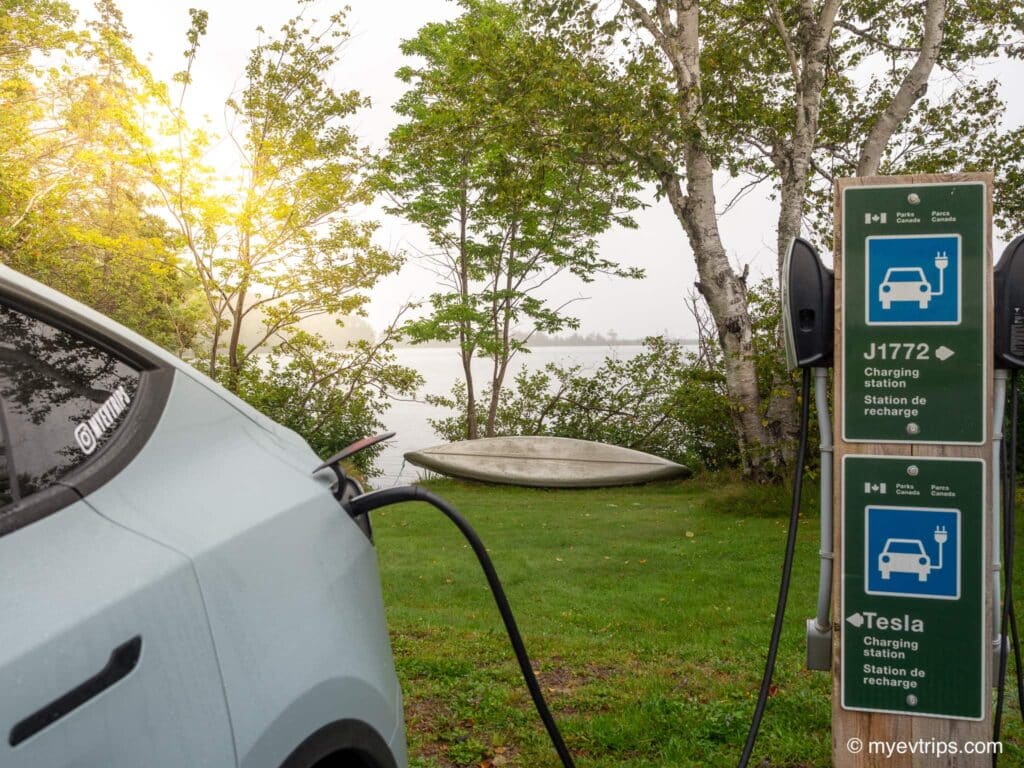
Yes, there are a lot of chargers, but there are also a lot of visitors to Cape Breton. According to Statista, the Cabot Trail consistently sees 200,000 to 300,000 people yearly. With the popularity of electric vehicles on the rise, these spaces are important.
If you are going on a hike or visiting a site, be sure to set a timer and be back in time to move your car when you’re done charging. Also, it’s a good practice to leave a note with your phone number in case someone is in a pinch and needs a spot. I use this little display board and leave it in on my dash.
5) Give Yourself Time
Although the Cabot trail can technically be covered in a day, take your time and take it all in.
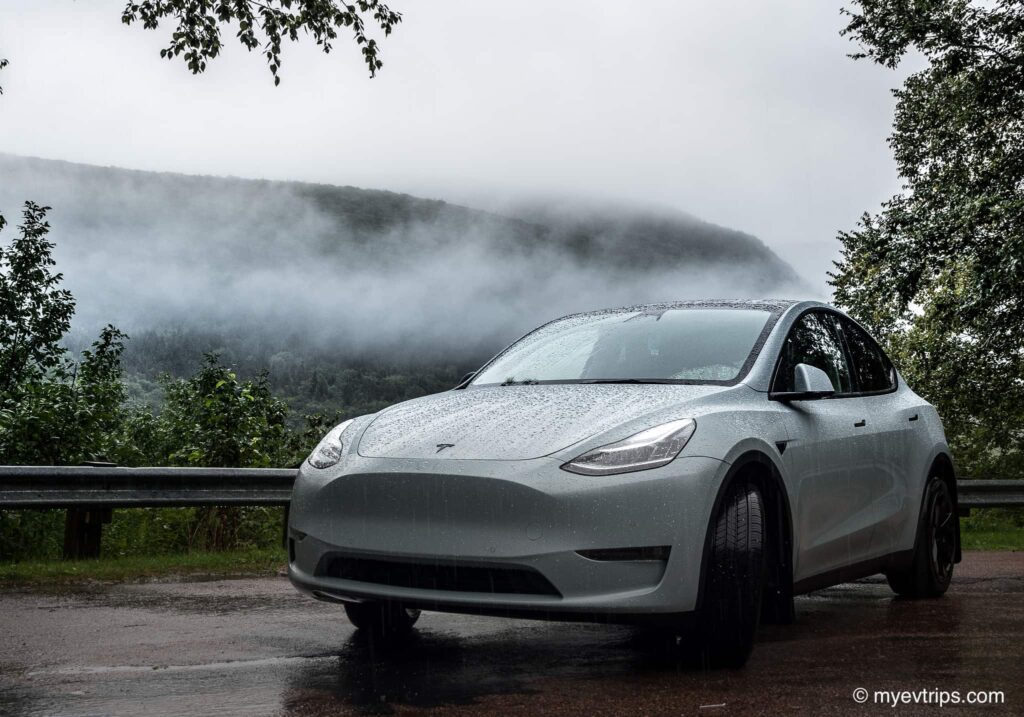
As I found on my road trip around Cape Breton Island, the weather can change at a moment’s notice. As such, it’s a good idea to buffer in some time to shift plans accordingly. Also, watch out for moose.
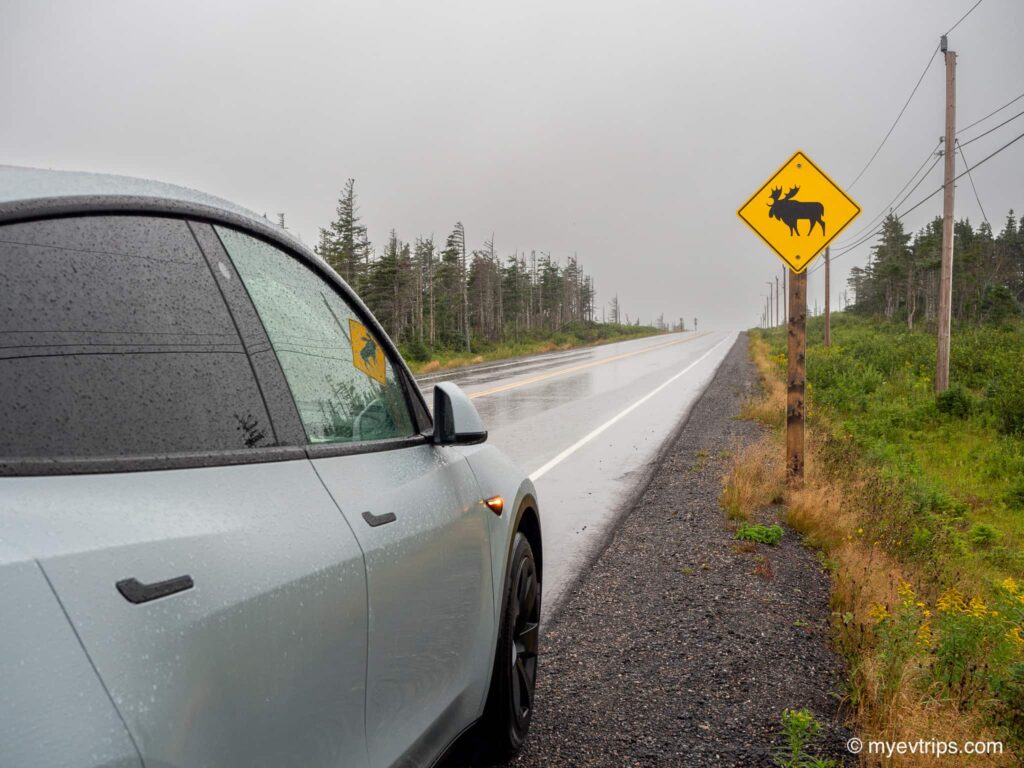
This also goes for Cabot Trail EV charging, as some stalls may not be available, and you may have to wait for a fast charger to free up.
Covering the Cabot Trail in an EV
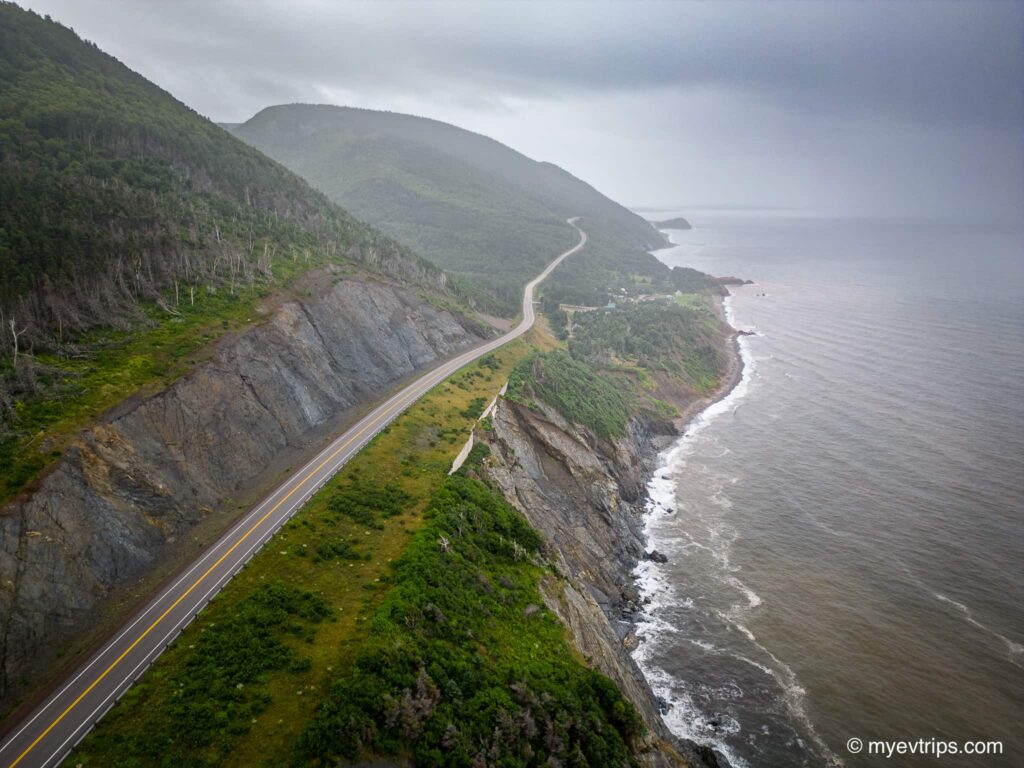
As you can see, with a little planning, covering the Cabot trail in an EV is easy and efficient. Even though there are no L3 Cabot Trail Tesla chargers, getting around is very easy, thanks to Park’s Canada charging infrastructure. And, because the chargers are free with park entrance, it’s also a very affordable way to see this amazing part of Canada. Plenty of great charging options with nearby sites and activities make this a great EV road trip option.
What say you? Good or bad, do you have experience with the Cabot Trail charging infrastructure? Let me know in the comments below!
SAVE ON A NEW TESLA!
Thinking of buying a Tesla? Use this referral link to get up to $1,300 off!*
*As of August 2024, Tesla has reinstated its referral program and introduced attractive financing options!
